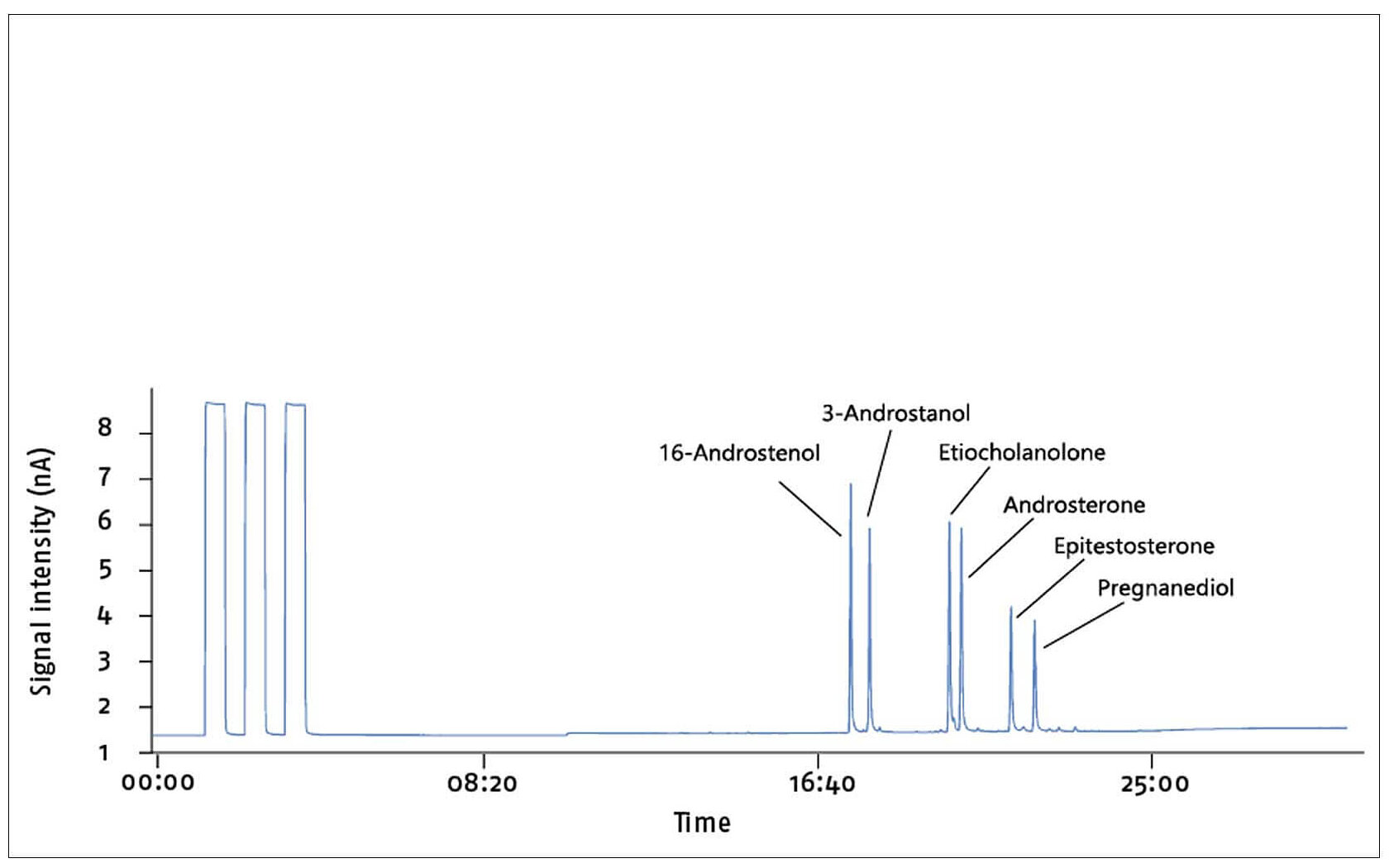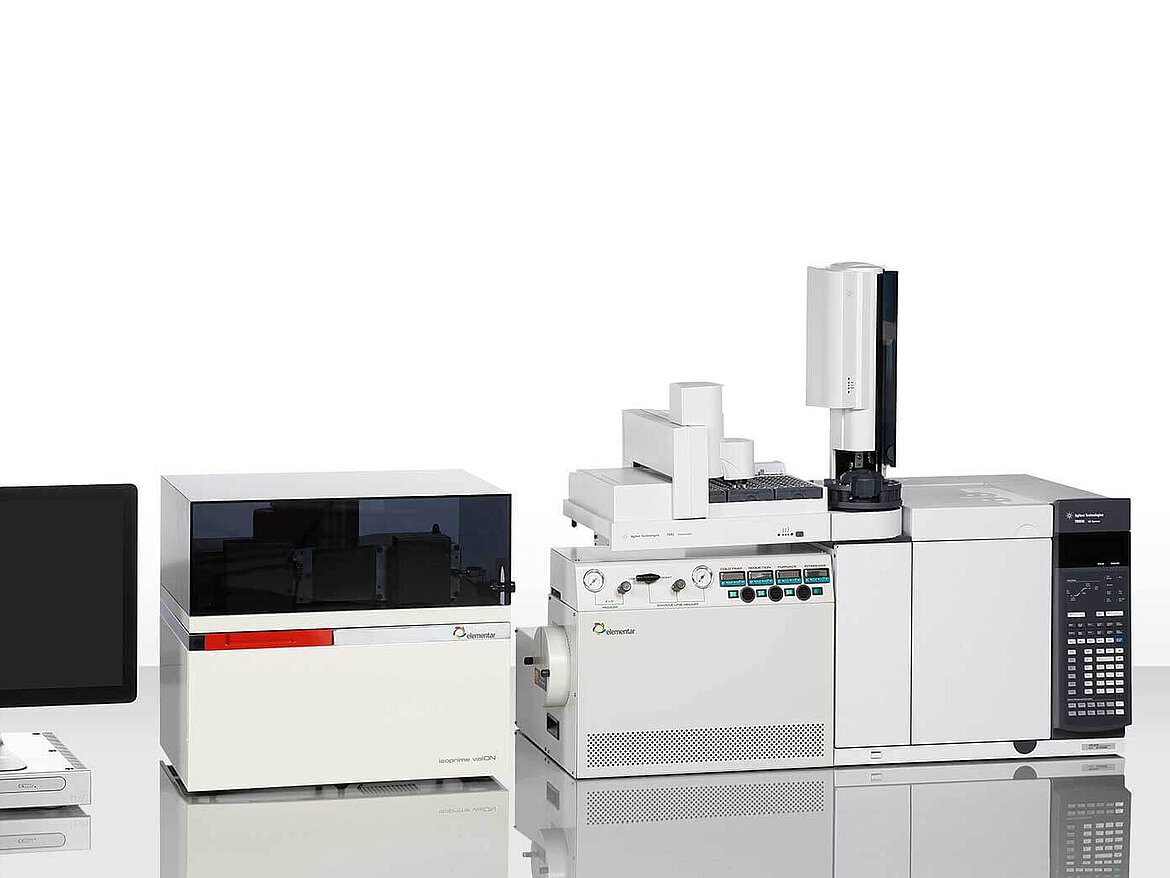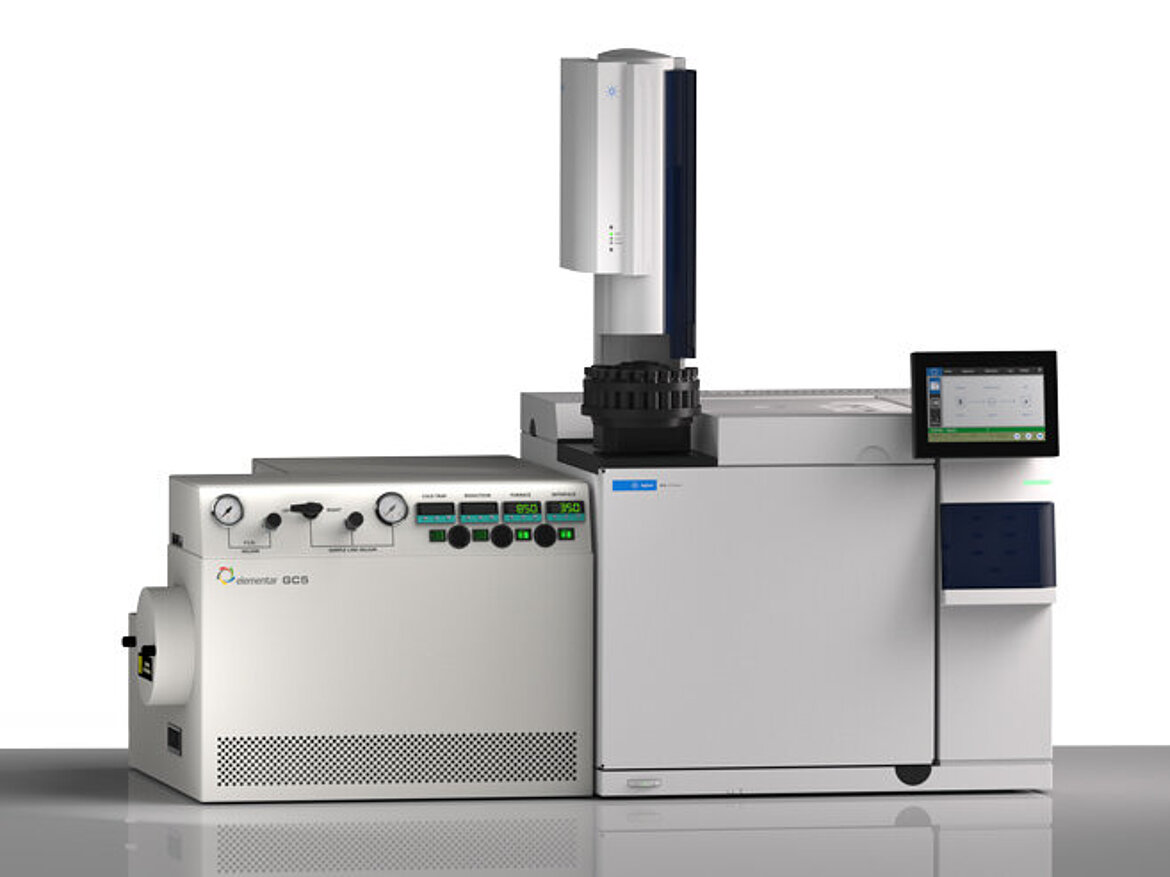A simplified and accurate method for the analysis of urinary metabolites of testosterone-related steroids using gas chromatography/combustion/isotope ratio mass spectrometry
Alexandre Ouellet, Nicolas LeBerre and Christiane Ayotte
Laboratoire de contrôle du dopage, INRS – Institut Armand-Frappier, Laval, Canada, H7V 1B7
Compound-specific stable carbon isotope analysis of urinary extracts is a technique included in the standard analysis for doping control as required by the World Anti-Doping Agency (WADA) and laid out in their Technical Document TD2016IRMS. Synthetic testosterone is usually synthesized from plant sterols and has a more negative δ13C value compared to testosterone produced naturally in the human body. By measuring the 13C/12C isotopic ratios of testosterone and its metabolites from urinary extracts using a gas chromatograph coupled to an isotope ratio mass spectrometer (GC-IRMS), it is possible to detect the presence of synthetic endogenous anabolic androgenic steroids. The diagnostic urinary metabolites and endogenous reference compounds (ERC) are present as conjugates in urine and thus must first be extracted, hydrolyzed and purified via HPLC. Seven diagnostic urinary metabolites, including testosterone, were pooled into three fractions with an external standard (androstanol, ESTD) and analyzed via GC-IRMS without any derivatization. To ensure the integrity of the data, a multi-point isotopic calibration approach was applied using the principal of identical treatment.
Using our GC-IRMS system, negative and positive control samples were produced and were analyzed along with a series of reference standards. The negative control was urine from a male volunteer that was not using any anabolic androgenic steroids (AAS) and the positive control was from another volunteer who was receiving testosterone enanthate for medical reasons. The long-term precision observed from these samples was excellent, with standard deviations being 0.5 ‰ or less for both the control samples and 0.2 ‰ or less for the reference standards. The overall linearity through the analyses of the negative and positive controls and the reference standards was excellent for signals ranging from 0.1 to 17 nA. The limit of isotopic quantification (LOiQ) was set to 0.5 nA (which corresponds approximately to 4 ng of compound) considering that the steroids produced consistent δ13C values above that peak intensity.
Strict analytical conditions and calibration of the Elementar GC-IRMS system with certified reference steroids produced data to efficiently detect the presence of artificial testosterone-related steroids in a group of athletes. The exceptional limits of detection, accuracy, precision, 100 % conversion of separated compounds thanks to the unique design of the micro-bore furnace, make the GC5 the ideal choice for the fight against the use of illicit drugs in sport.
Please find the full paper here: https://doi.org/10.1002/rcm.6620



